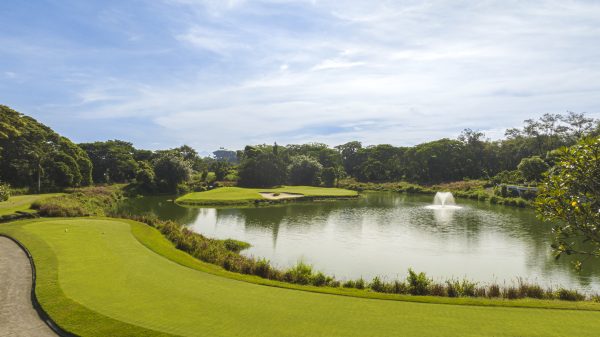As many of the readers here know, Hua Hin is home to some of Thailand’s best courses, and the best time of year to play here is during the annual Hua Hin / Cha Am Golf Festival, which has taken place every year during the months of August and September since the Tourism Authority of Thailand kicked it off 15 years ago on 31 July, 2004.
It has grown to be a very popular event, with courses offering heavily discounted green fees and hotels joining in to offer reduced room rates to entice golfers from Bangkok and around the region. There is a roster of 10 courses this year, led by Black Mountain and Banyan, which regularly scoop up a large number of the coveted awards handed out at the Asian Golf Awards every year.
So, a few weeks ago I headed out to Hua Hin with a merry band of group of very sociable golfers to play two courses over the weekend and discovered that you really do get what you pay for.
For even the best courses, low season means going into survival mode, as the lucrative tourist golfer who makes up an enormous part of Thailand’s golf and hotel sector disappears, meaning that maintenance budgets and other operating costs are cut back. For the golfer looking to play a premium course for a budget price the Festival is absolutely fantastic, and the courses get a bump in revenue from discounted green fees, so it works all round – unless you are expecting to get the best quality.
The courses we played were in less than brilliant nick, with rock-hard, fungus-infested greens, weed-covered fairways, and beat-up teeboxes. I have played these courses in high season, when you pay a premium but get grade-A maintenance. For me it was a shocker. A golf course is a living, breathing thing and if left neglected will suffer, as these courses have.
The case must be made for the development of the local industry, starting with exposing middle-school students to the game. In Thailand, junior golfers almost all come from wealthy families, who start their kids off very early with the dreams of achieving a golf scholarship to an overseas university. With enough determination, money and practice, anyone can learn – and excel – at the game of golf, even achieving competitive quality.
However, the majority of golfers play for the enjoyment, the exercise, the camaraderie, the gambling, the prestige of belonging to a club, and any number of other reasons. Additionally, golf teaches honesty, respect for tradition, effort, honour, fair play, etiquette, and personal achievement – traits that people of any generation can benefit from.
These are things that kids can benefit from by starting early and getting golf into the Thai public middle school system is a way to create a future generation of golfers that keep Thailand’s courses busy year-round. Kids don’t need a full set of clubs or even good clubs. They just need one club and the experience of whacking a ball and decide if they enjoy it. Take the class to a driving range once a week. Get some driving nets. Just get some exposure for the masses to the game.
In many parts of the world golf is an everyman sport, with all ranges of the socioeconomic spectrum represented – not just the elite. It’s time for Thailand to get its youth involved in the sport so that the low season blues can fade into memory.
This post has already been read 478 times!








